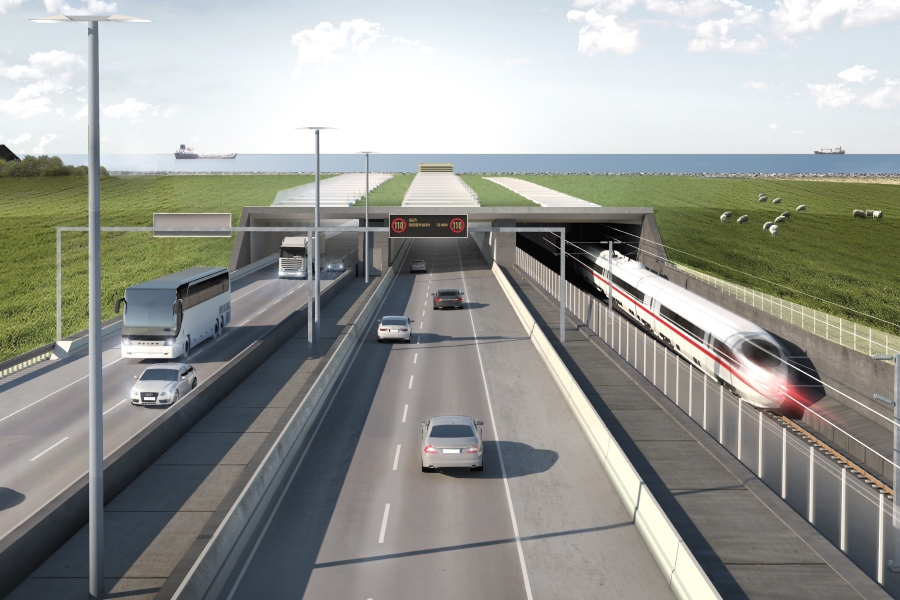What is pre-construction?
Any construction project—be it a residential scheme, office development, school, hospital or transport facility like an airport or railway terminus—is a complex affair, one that requires coordination, collaboration, communication and quality control.
So what does the pre-construction phase consist of? Some describe it as laying the foundation for the success of a project, while the Construction (Design & Management) Regulations 2015 simply describe it as “any period of time during which design or preparatory work is carried out for a project and may continue during the construction phase.”
Ultimately, the pre-construction phase involves allowing enough time for the necessary work before construction begins to be completed. This includes creating a strategic plan for the project, its scope, a budget for the development, settling on a design of the structure being proposed, arranging permits for permission to build and hiring general contractors to work on the job.
Why every project needs a pre-construction phase plan
Projects require detailed planning from the outset. During this pre-construction phase, elements including project strategy, design, procurement, timings and so on are finely balanced. Make a mistake in any of these areas as a result of poor planning, and the prospects for a successful delivery can be thrown into jeopardy.
Setting client expectations
When a client decides it wants to build something, it has to meticulously plan for a number of outcomes, not least who will be doing what on the job, well before a spade has been plunged into the ground. For clients to get the best results, planning in the pre-construction phase helps them set their expectations when it comes to communication and collaboration. Whether an overview of their preferred workflows and processes or the detail behind information storage, sharing and reporting, it is important to agree on the standards and how work will be measured against them.
Procuring building materials
Planning properly for procurement, making sure that essential materials required for the job are available and will be delivered on time and within budget—this is another key element of the pre-construction phase.
Providing the right information to designers and general contractors
Defined as relevant information held by the client about the job being planned, the CDM Regulations state that pre-construction information must include information about the project, planning and project management of the proposed scheme, as well as the ways in which health and safety on-site will be maintained. It acts as a sort of touchstone, used from the outset to guide designers when they come up with or change their design for a scheme and referred back to throughout the project, creating an audit trail for all changes and decisions made.
Keeping communications open
Communication is also a vital aspect of any construction job, but particularly in the early stages. Firms such as St. Louis-based Holland stress that time should be taken to prepare a communication plan that works for everyone, “allowing everyone to interact in a way that meets their needs for the project. A construction team that communicates well can help ensure that when obstacles arise, they can be overcome effectively and efficiently.”
The need for collaboration during pre-construction
There are a number of stages during the pre-construction phase that involve some or all of the eventual participants. This means that any pre-construction plan needs to be backed up by collaborative tools that will make document sharing, teamwork and communication seamless throughout the whole project life cycle.
Initially, the developer or owner of the proposed scheme identifies and acquires a site on which to build. They will have settled on an investment program and will be aware of a profit target they hope to achieve if the scheme is delivered on time and within budget. They may have decided to sell the finished building to a third party or retain it and lease it to a tenant.
Through a bidding process, the developer then hires an architect, who will create a series of design proposals that will be submitted for planning consent.
A design review phase then sees the involvement of a quantity surveyor, who will assess what will be required in terms of materials for the project. Engineers, designers and project managers and administrators come on board as the proposals begin to take shape.
The owner will also retain the services of a health and safety manager, who will ensure the site is a safe working environment. The Health & Safety Executive says gathering as much health and safety information about the project and the proposed site before work begins is important. “Information available at bidding should be used so that allowance is made for the time and resources required to deal with problems,” it adds.
At this point, a bid is put out to attract a main general contractor. The successful candidate will be expected to deliver the project on time and within the agreed budget. Overruns will often require a form of compensation, depending on the contract.
Finally, before construction can begin in earnest, the main general contractor and the project management team arrange for the supply of the required building materials, construction logistics, relevant software and appointment of sub-contractors to get the job done.
How Bluebeam creates successful pre-construction outcomes
According to Iain Parker, a partner at alinea consulting, the most successful pre-construction outcomes arise when talented people are mobilized, engaged in the right areas and are keen to impress.
“Significant benefits” can arise through early contractor engagement, Parker said. “It is naive to think that the client team have all the optimum answers and best ideas.”
But getting a contractor on board too early doesn’t always offer value either. “All the client sees is a lot of costly people with not much return,” Parker said. It’s all about balance—and the team’s culture.
“Putting the project in the best possible position during the pre-construction period to achieve a successful outcome through the construction period is the whole team’s collective responsibility, including the client.”
“Everyone is reliant upon one another, which is what makes our industry achieving things together so rewarding. When it’s good, it’s really, really good.”
As a result, communication is very important. Building positive relationships among teams, making sure that the right pre-construction information is available at the right time and keeping track of decisions and changes are the important foundations behind every successful project.
This is where software can help, and for a relatively small investment. Find out more about how you can review your existing technology stack and achieve a fast return on investment (ROI) from any software rollout here.












